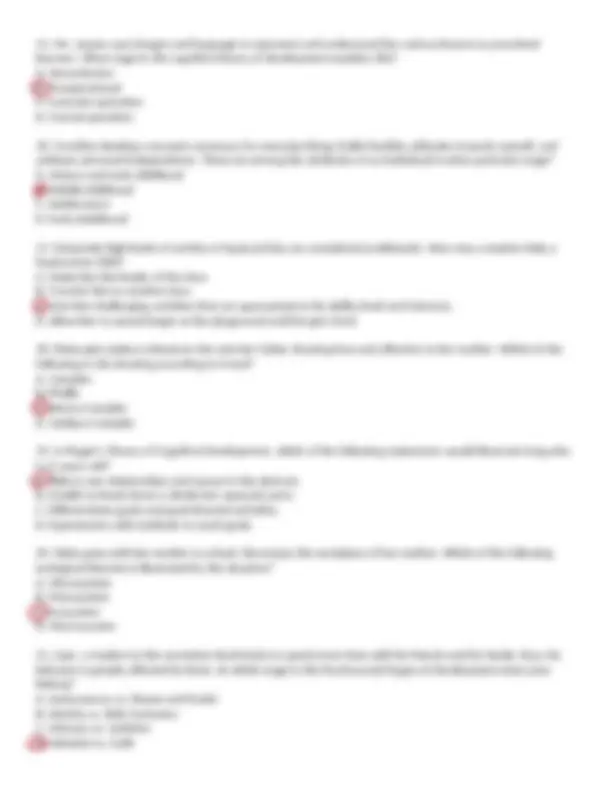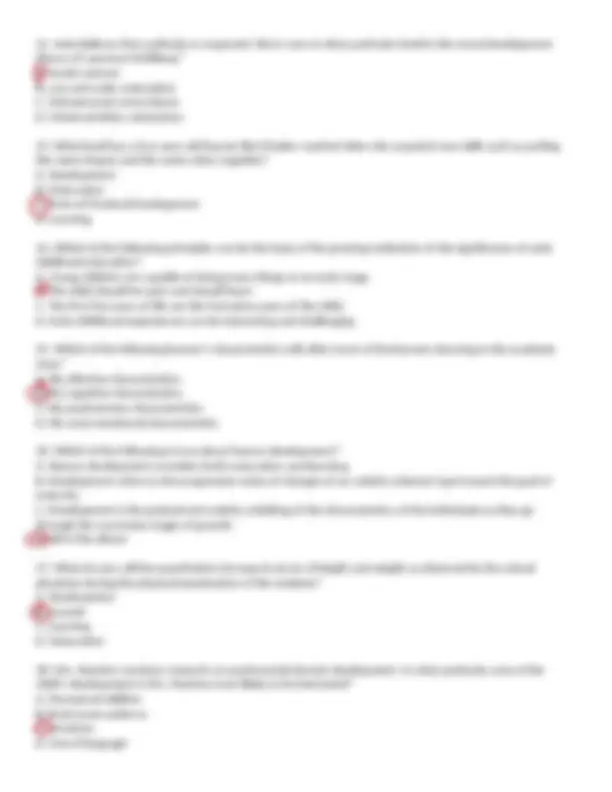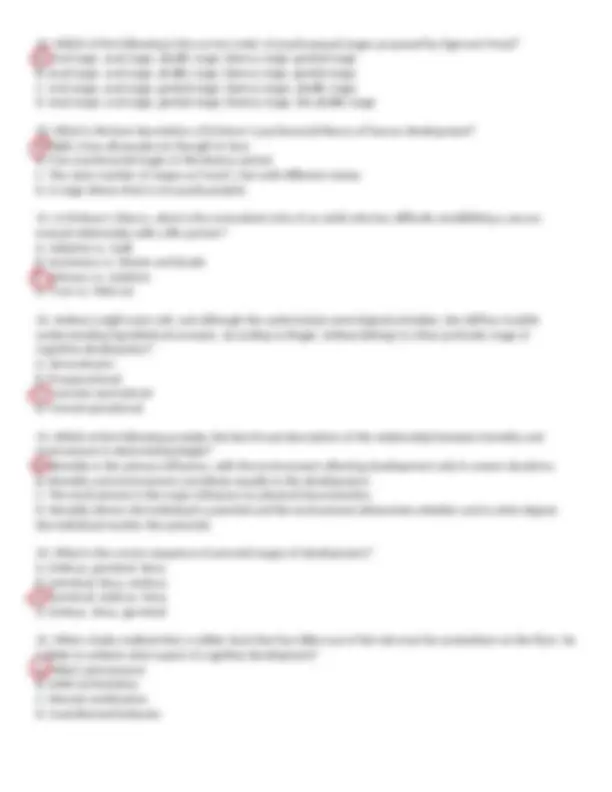PROF ED: CHILD & ADOLESCENT DEVELOPMENT
1. Dr. Rivera, the school physician conducted a physical examination in Ms. Bernal’s class. What concept best
describes the quantitative increase observed by Dr. Rivera among learners in terms of height and weight?
A. Development
B. Growth
C. Learning
D. Maturation
2. Which situation best illustrates the concept of growth?
A. A kinder pupil gains 2 pounds within two months.
B. A high school student gets a score of 85 on a mental ability test.
C. An education student has gained knowledge on approaches and strategies in teaching different subjects.
D. An elementary grader has learned to play the piano.
3. Which statements below best describe development?
A. A high school student’s height increased by 5’2″ to 5’4″.
B. A high school student’s change in weight from 110 lbs. to 125 lbs.
C. A student had learned to operate a computer.
D. A student’s enlargement of hips.
4. What concept can best describe Franco’s ability to walk without support at 12 months because of the
“internal ripening” that occurred in his muscles, bones, and nervous system development?
A. Development
B. Growth
C. Learning
D. Maturation
5. Teacher Jessa is now 69 years old and has been observing changes in himself such as the aging process.
Which term refers to the development change in the individual?
A. Development
B. Growth
C. Learning
D. Maturation
6. Lael, a five-year-old boy can hold his pen and write his name with his right hand. Which term describes
Lael’s action/behavior?
A. Development
B. Growth
C. Learning
D. Maturation
7. Which of the following theory can help Miss Jara determine the readiness of her learners by administering a
readiness test?
A. Conditioning Theories
B. Cognitive Development Theory
C. Maturation Theory
D. Ethological Theory
















